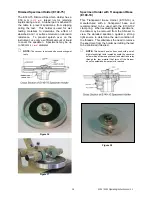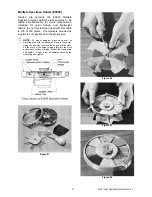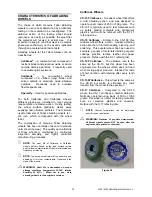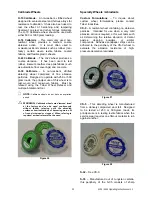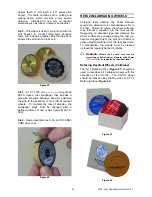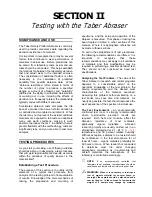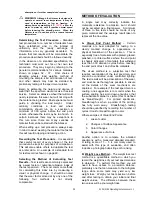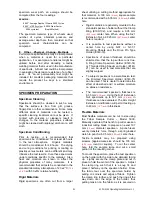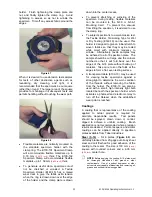
ADJUSTING FOR OPTIMAL
PERFORMANCE
Selecting Abradant
Wear is a complex phenomenon and trying to
replicate it exactly in a laboratory setting can be
a challenge. There are numerous factors that
influence real-life wear, and identifying each
influence can be unwieldy. The ideal solution
would be to analyze the product in actual use,
however this could take months or years before
useful data becomes available. In addition, this
type of testing is often uncontrolled and costs
tend to be prohibitive.
Accelerated testing with the Taber Abraser is a
cost effective solution that provides a predictive
performance under a specified set of criteria.
While laboratory tests may not be 100%
representative of actual wear, established test
methods typically eliminate extraneous
variables, thereby enabling materials to be
evaluated using the same set of criteria.
The choice of which abrasive wheel to use with
your instrument is highly dependent on the
material that is being evaluated. Ideally, test
results should be correlated with field
observations. Many test methods specify which
genuine Taber abrasive wheel should be used.
If you are not following an established test
method, trial and error is suggested to help
determine whether one abrasive wheel is better
than another. Genuine Taber CS-10 and H-18
wheels are provided to assist with this
evaluation. It is often the case that materials
degrade faster with the more demanding
conditions of accelerated testing however as a
basic rule of thumb, a minimum number of test
cycles should be completed before the end point
occurs (i.e. 300 cycles). Otherwise, the
abradant may be too aggressive or the load is
too great.
Genuine Taber abrasive wheels are available in
a variety of standardized formulations. Each
offers unique features and provides a means to
precisely and effectively evaluate your material.
For additional information, see Characteristics of
Abrading Wheels on page 21.
NOTE:
To inquire about custom formulations, please
contact Taber Industries.
Mounting the Abrading Wheels
A feature of the model 5135 / 5155 is the Quick
Release Mounting Hub. Utilizing an expanding
collet hub, Genuine Taber wheels are quickly
mounted to the abraser. A spring loaded,
beveled retaining nut provides a positive locking
force making certain the wheels remain securely
fastened. This eliminates the possibility of a
locking nut becoming loose during testing.
Figure 49
Genuine Taber abrading wheels are supplied in
pairs. A close inspection of the wheel labels will
show that one is marked “Left Hand”, while the
other is “Right Hand” (
Figure 50
). The purpose
of this is to assure that the mounting position of
the wheels will be duplicated when they have
been removed after use and later reinstalled.
The wheel labels should be facing inward.
Before preparing the wheels for testing, check
their condition and expiration date (if applicable).
Wheels that appear ‘out-of-round’ must be
refaced with the Wheel Refacer. Refer to
Refacing Calibrade Wheels on page 24.
Figure 50
To mount a wheel, press the push button
located at the end of the auxiliary weight mount.
This will release the beveled retaining nut
enabling the collet to contract. With the label
facing toward the center of the turntable,
carefully slide the wheel all the way onto the
mounting hub. Release the push button. The
hub retaining lip will secure the wheel until it is
disengaged.
Periodic cleaning of the mounting hub and
19
5135 / 5155 Operating Instructions ver 1.1












